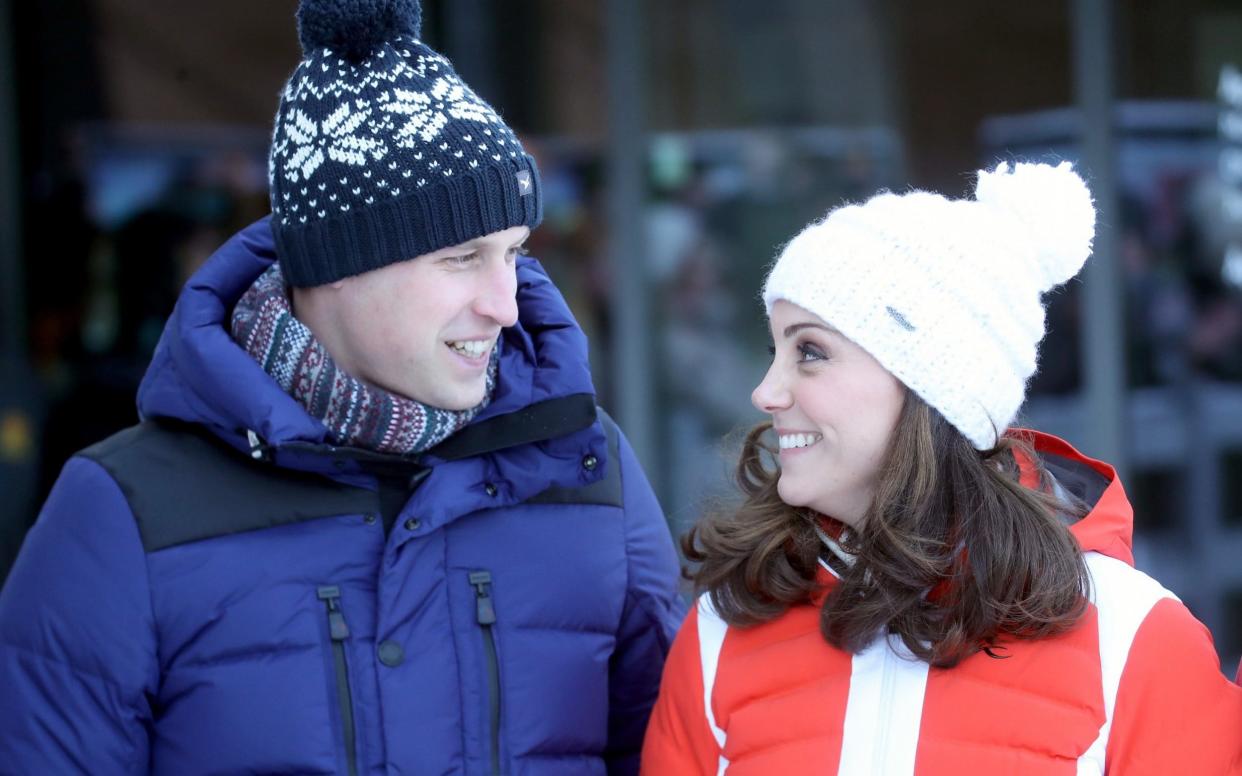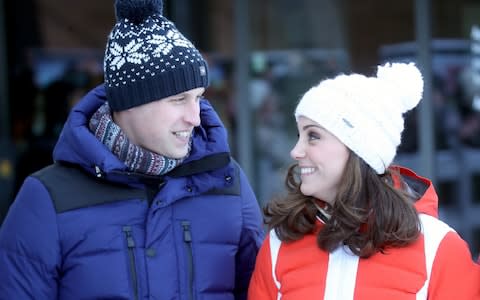Duke and Duchess of Sussex - Harry and Meghan's new Royal titles explained

When Meghan Markle marries her fiancee Prince Harry on Saturday 19 May at St George's Chapel, Windsor, like all brides she will be joining a new family.
But this is not any family. Just like her sister-in-law-to-be Kate Middleton, the former American actress will be making the transition from "commoner" to "royal" complete with a new title.
Here's everything you need to know about the British peerage and their new titles - the Duke and Duchess of Sussex, as confirmed this morning.
The Duke and Duchess of Sussex
Ms Markle becomes the first Duchess of Sussex as she marries Prince Harry.
By tradition, male members of the Royal family receive a title from the monarch on their wedding day, and the vacant title Duke of Sussex is regarded as the most likely choice for the Prince.
The only previous Duke of Sussex was married twice, but neither of his marriages was approved by his father, George III, meaning they were considered unlawful.
It means that Ms Markle is the first woman entitled to use the title HRH The Duchess of Sussex.
Ms Markle’s full name is Rachel Meghan Markle, but she was named as Meghan in Buckingham Palace’s announcement of the engagement, meaning she is unlikely to revert to Rachel when she is married.
Meghan and Wallis: Two American divorcées marrying into royalty - what a difference 80 years makes
What's the procedure in choosing a title?
A dukedom is the highest rank in the British peerage and comes from the Latin word dux, meaning leader.
Traditionally, the monarch would bestow these titles on people loyal to the crown, in exchange for land or money, or they were inherited from a direct ancestor. They were known as "peers of the realm".
The five titles, from highest to lowest are: duke, marquess, earl, viscount, and baron for men; duchess, marchioness, countess, viscountess, and baroness for women.
The Queen is expected to choose a Dukedom for her grandson from titles that are currently suspended, and other options include the dukedoms of Clarence, Connaught, Windsor, Albany, and Cumberland and Teviotdale.
However, many of them have inauspicious histories that would almost certainly rule them out.
Titles and how to use them
Charles Kidd, editor of Debrett’s Peerage & Baronetage, said he believed the Queen would choose the Dukedom of Sussex for Prince Harry, which was previously held by George III’s sixth son Augustus Frederick.
He said: “They’re quite limited in the titles that are available. The Duke of Sussex is the front-runner without any doubt.”
Who was the previous Duke of Sussex?
Like Prince Harry, the previous Duke of Sussex, Augustus Frederick, lived at Kensington Palace, and he also married for love, rather than choosing brides who fitted the traditional royal mould.
Prince Augustus Frederick was not given consent by his father, King George III, to marry his first wife Lady Augusta Murray, as she was considered to be from too low a social rank.
The Prince married her anyway, in secret in Rome in 1793, and then again in England when they returned, but without the king’s permission the marriage contravened the Royal Marriages Act 1772 and was annulled in 1794.
The couple continued to live as man and wife and had two children before they eventually separated.
In 1874 Sussex was also given as an Earldom alongside the Dukedom of Connaught and Strathearn to Queen Victoria’s third son Prince Arthur.
The titles became extinct on the death of his grandson Alastair Windsor, the second Duke of Connaught and Strathearn and Earl of Sussex, in 1943.
Sussex existed as a non-Royal title before it was given to Prince Augustus. The Earldom of Sussex was given to William d’Aubigny in 1141 and was passed down that family until the death of the 5th Earl of Sussex, who was usually known as Earl of Arundel, in 1243.
Four families subsequently took on the title before it was given to a member of the royal family, in 1529, 1644, 1674 and 1717.

Prince William and Kate Middleton's titles explained
When Prince Harry's brother William married Catherine Middleton in 2011, the Queen bestowed the title of the Duke of Cambridge, Earl of Strathearn and Baron Carrickfergus on her grandson. Catherine, known as Kate, became the Duchess of Cambridge.
Like the Duke of Sussex, the previous Duke of Cambridge, Prince George, known as the 2nd Duke of Cambridge, married a commoner for love just like Prince William.
Born in 1819, he was a grandson of George III and the only son of Prince Adolphus Frederick, the 1st Duke of Cambridge. He refused to have an arranged marriage and declared such unions were "doomed to failure".
He became captivated by the actress Sarah Louisa Fairbrother, who was said to be a classic beauty and a graceful dancer. They wed in 1847 when she was already the mother of two of his children and pregnant with his third.

Are there any other royal dukes?
The Queen’s second son, Prince Andrew, was created Duke of York upon his marriage to Sarah Ferguson in 1986.
The Queen’s youngest son, Prince Edward, however broke with royal tradition when he chose the title of Earl of Wessex upon his marriage to Sophie Rhys-Jones (now Sophie, Countess of Wessex) in 1999.
The other royal dukes are The Queen’s first cousins, the Duke of Gloucester and the Duke of Kent.
What other titles will they be known by?
The Prince will also take on the titles of Earl of Dumbarton and Baron Kilkeel. As is tradition, he has been given one title from England, ones from Scotland and one from Northern Ireland on his marriage.
The Earldom has been given on one previous occasion to George Douglas, a younger son of the first Marquess of Douglas, who was created Earl of Dumbarton in 1675.
On the death of the second Earl in 1749 the title became extinct and has not been given as a title since.
Dumbarton is a town on the north bank of the river Clyde in the west of Scotland.
The title of Baron Kilkeel has never previously been granted. Kilkeel is a small fishing town on the coast of County Down in Northern Ireland, below the Mourne Mountains.
Meghan Markle will also become Princess Henry of Wales. She will not have the title of Princess Meghan since she is a princess by marriage, and not in her own right.

